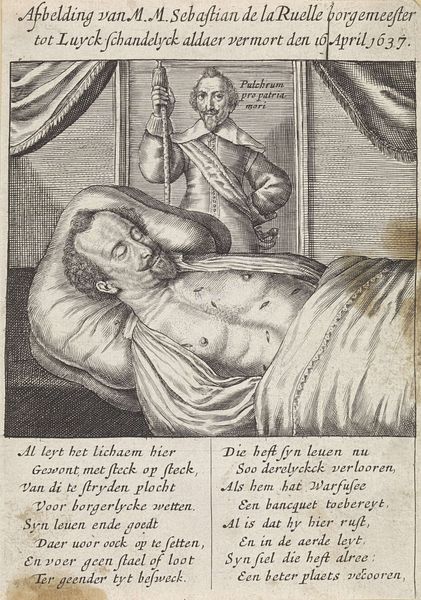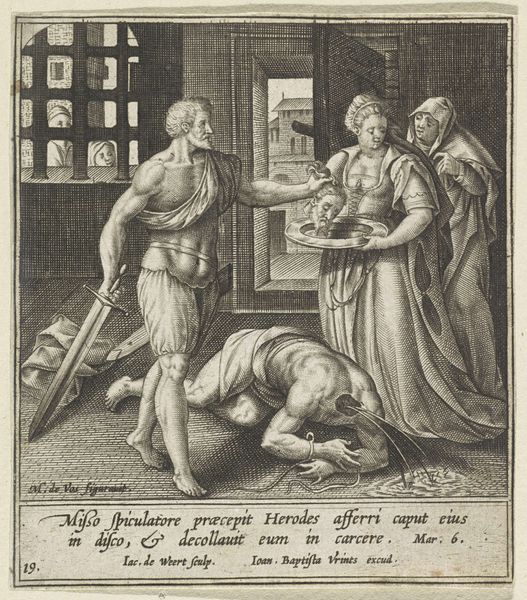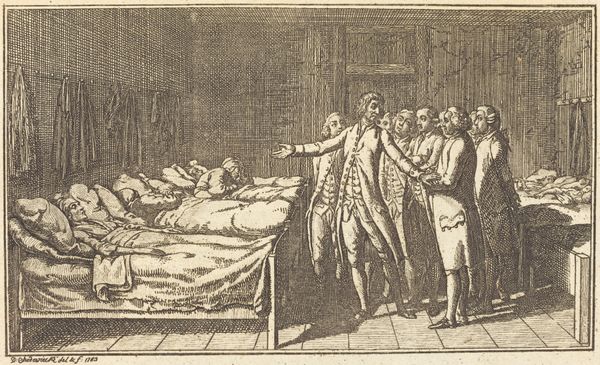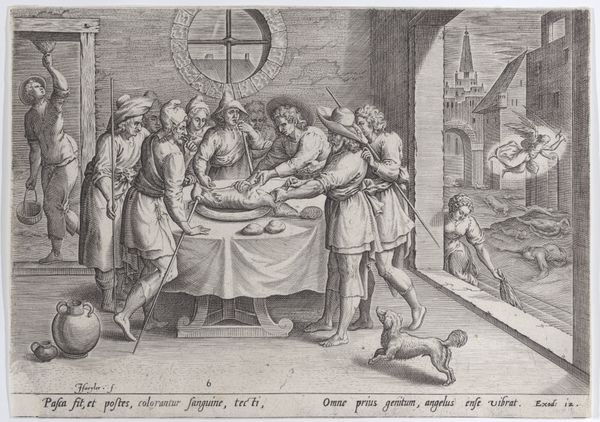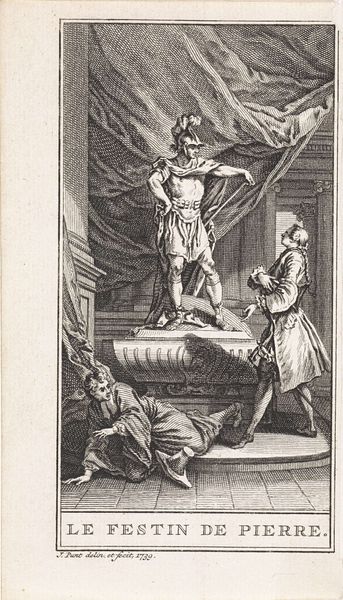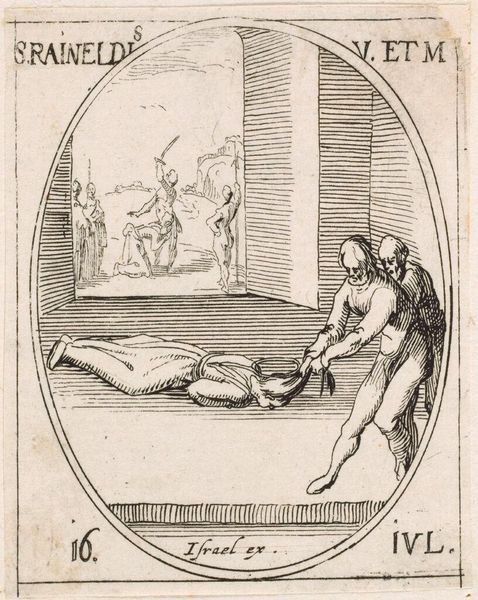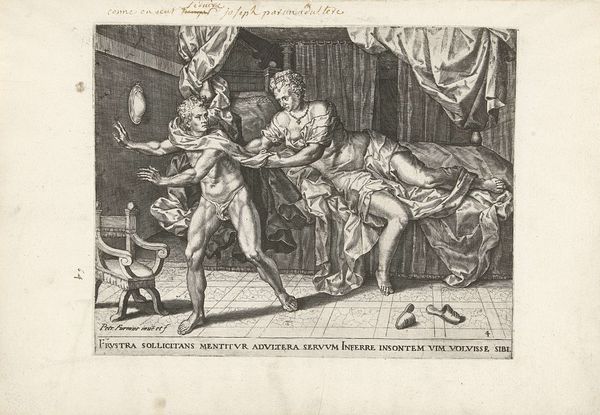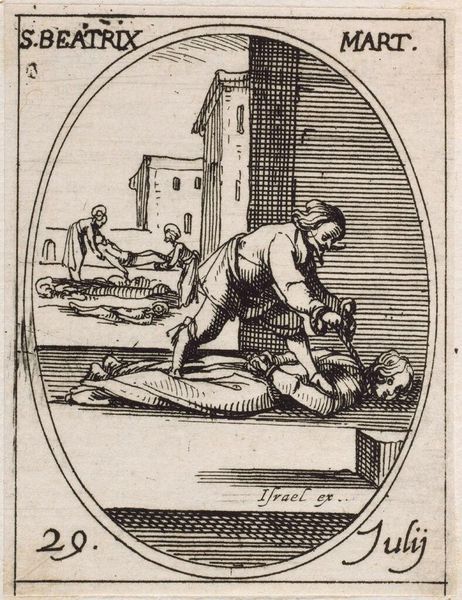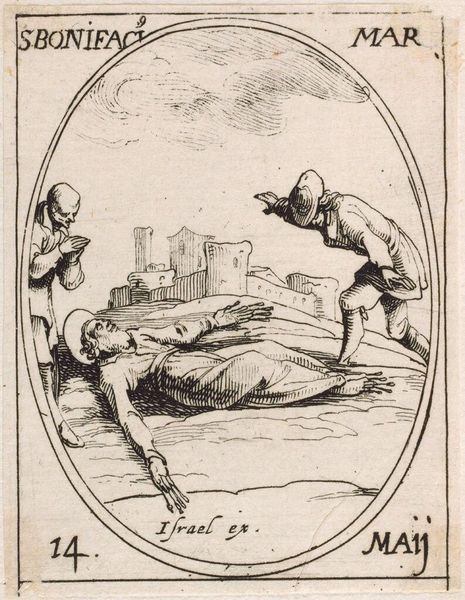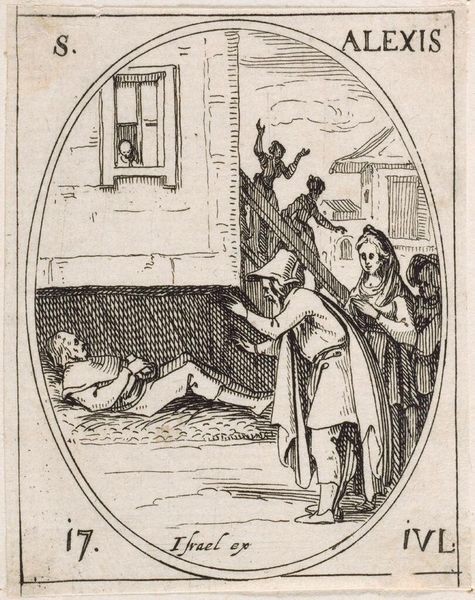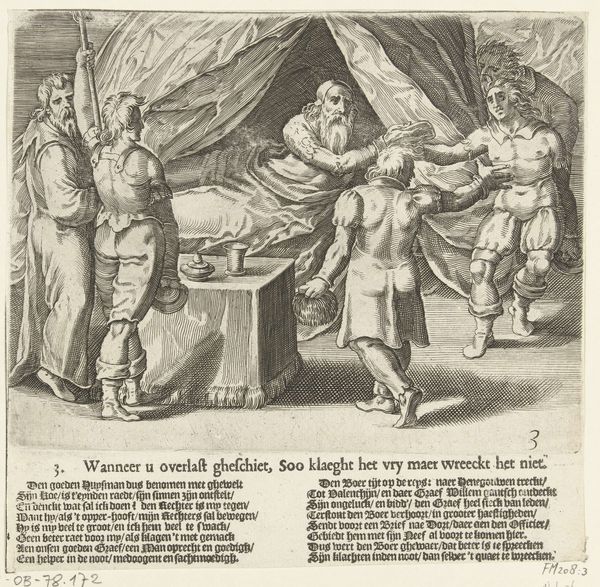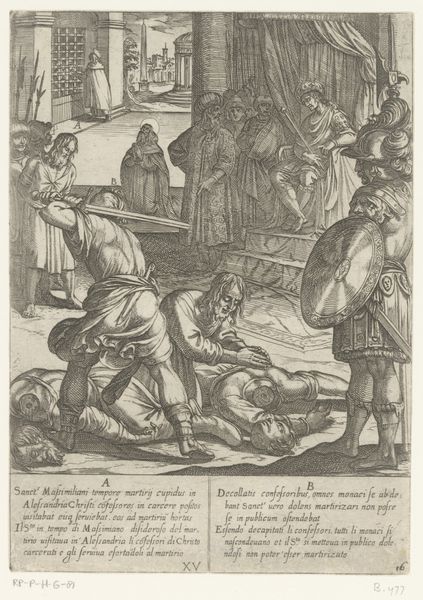
drawing, print, paper, ink, engraving
#
drawing
#
medieval
#
narrative-art
# print
#
figuration
#
paper
#
ink
#
history-painting
#
northern-renaissance
#
engraving
Dimensions: height 108 mm, width 88 mm
Copyright: Rijks Museum: Open Domain
Curator: There's a somber mood hanging in the air of this piece. It's "The Burial of John the Baptist," an engraving from sometime between 1580 and 1600, created by Jacob de Weert after a design by Maerten de Vos. What catches your eye about it? Editor: That rigid, blocky architecture looming in the background feels strangely disconnected from the grief being depicted. It’s almost oppressively stoic against the vulnerability of the body. I’m curious about the artist’s choice to juxtapose these elements. Curator: It is a compelling contrast, isn't it? The architecture might symbolize the unyielding law or even the rigid societal structures that ultimately led to John's demise. But look at the bearers; their strained faces suggest the heavy weight they carry—both physical and emotional. Editor: The winding sheet almost becomes a stage, setting him down for the last act, if that makes sense. I can see him floating, too, between the land and whatever afterlife or next destination lies beyond. This tension makes the narrative space of the image incredibly palpable. Do you think this effect contributes to our engagement with a timeless feeling of grief and loss? Curator: I do. Death always leaves behind an ache. What strikes me is the starkness of the scene, characteristic of Northern Renaissance engraving. There is very little sentimentality, as much of the weight must come from internal, personal feeling. Editor: You can feel that in how little space the figures occupy within that broader, barren setting—the engraver chose restraint. What kind of symbolic continuity, in your view, does this choice ensure when rendered so precisely? I feel that I can appreciate it at once, without necessarily losing that quiet ache you mention. Curator: It certainly solidifies its power. The scene transcends its historical moment by capturing this timeless tableau of human sorrow. I notice the use of light and shadow creating almost theatrical effects that emphasizes the universal weight of death. Editor: Exactly, the scene echoes across centuries, capturing human mourning—a universal echo.
Comments
No comments
Be the first to comment and join the conversation on the ultimate creative platform.


